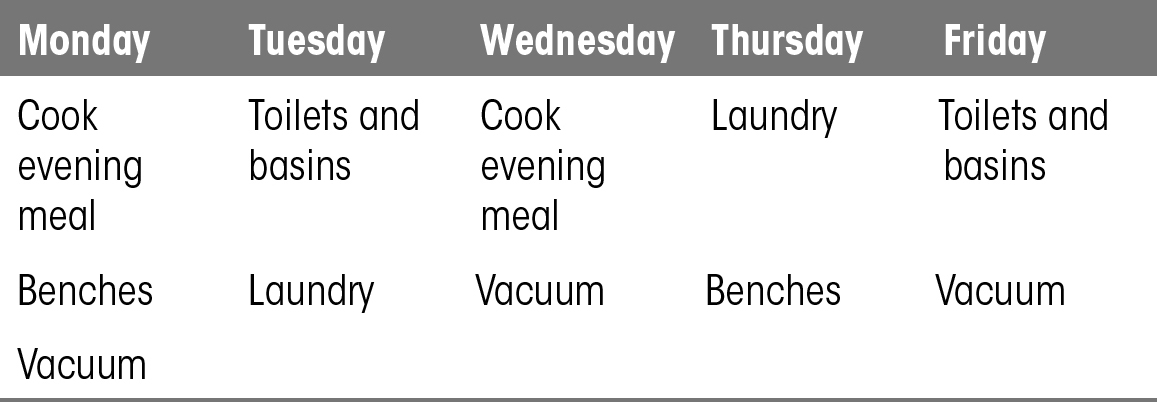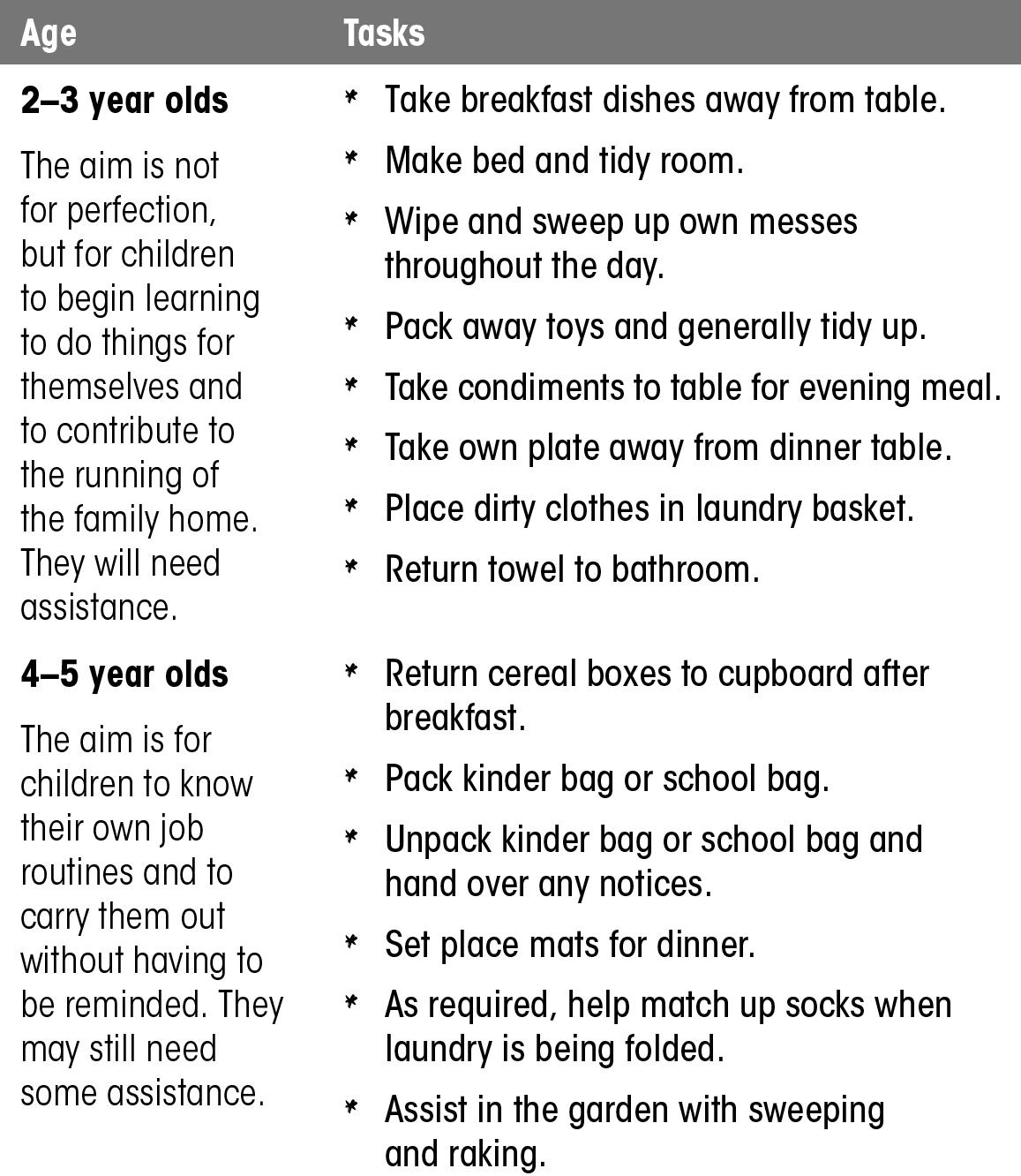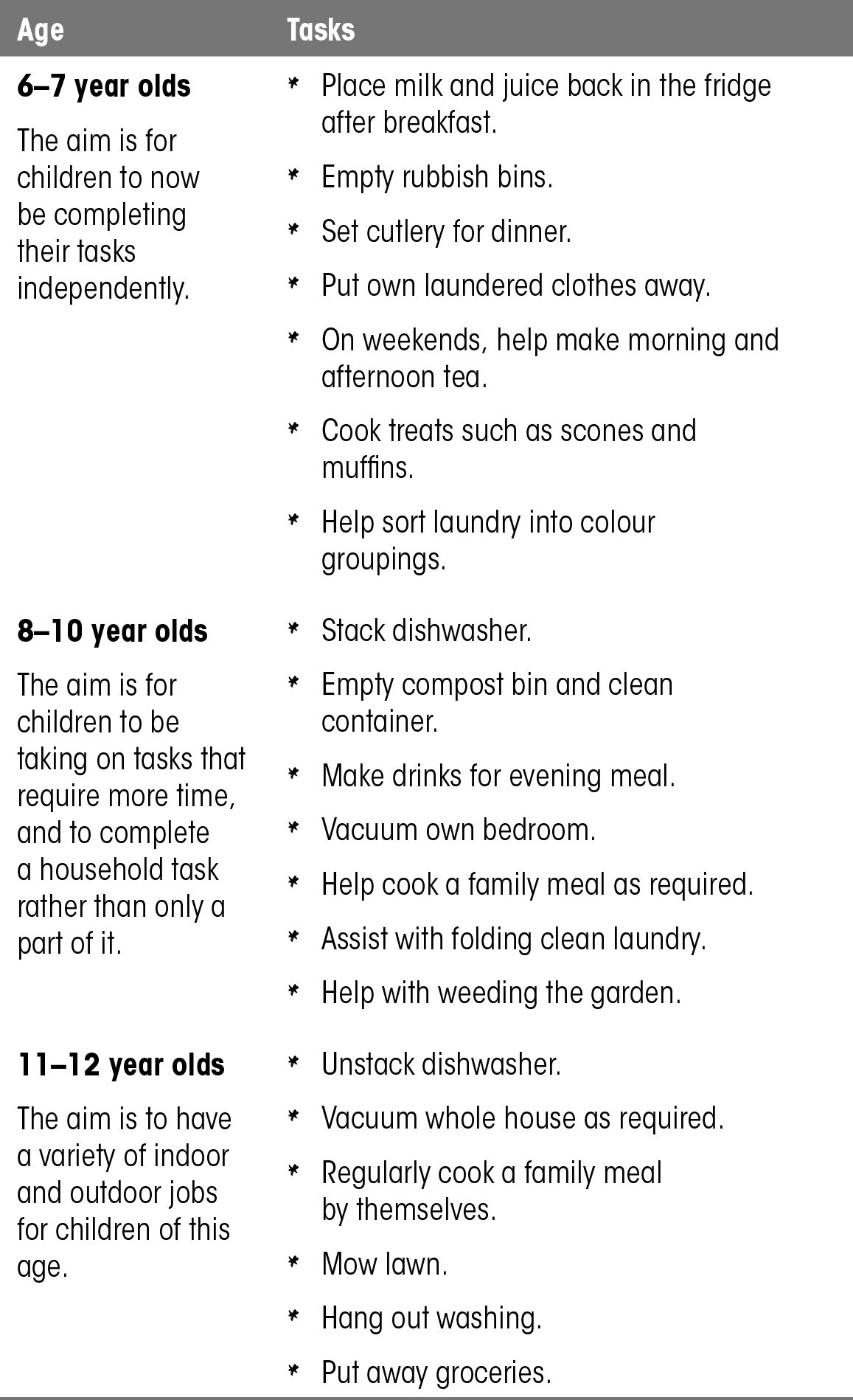I’ll be completely honest and say that
cleaning is my least favourite aspect of daily life. People often think
that as I’m slightly planning obsessed I must have the ‘perfect’ house,
but I’m always happy to dispel this myth! My house is generally well
organised, but with five children it meets that ‘perfect’ status only on
very rare occasions, and even then only after a tremendous amount of
work.
Rather than
aspire to perfection, therefore, I’ve instead found a base level of
cleanliness and tidiness that I need to operate from. This was an
important discovery for me, not just because it mattered to me what the
house looked like, but also for controlling my stress levels! Over the
years I’ve worked out that when the piles of papers start to build up,
the toilets need cleaning (very regularly with lots of boys in the
house) and the floors need a vacuum and mop, my underlying stress levels
increase. From this elevated baseline of stress, I found my patience
was shorter, I would find more faults in what my very patient husband
was doing and all I could see was mess everywhere I looked.
Every
morsel that passes my children’s lips MUST be consumed at the table.
Otherwise I spend my day sweeping or cursing the amount of crumbs and
food rubbish littered throughout the house. We always have a face washer
sitting on the kitchen sink to wipe the children’s hands and mouth.
Katie McIntosh, mum of eight
This scenario would
inevitably end with my having a massive rant about the filthiness of the
house and how I was tired of cleaning all the time (and so on and so
on) — a scenario that’s probably very familiar to most mothers. I
realised there are key household chores that, when under control, I can
turn a blind eye to (such as bookshelves that need dusting or a dirty
oven).
A key task guide
One of my biggest
discoveries as a stay-at-home mum was that not only do kids function
better with routines, but so do parents. Daily life can be so busy it
can be overwhelming at times. A common reaction to feeling overwhelmed
is paralysis: doing nothing because you don’t know where to start.
Whenever
I was overwhelmed by the amount of cleaning needing to be done, it
showed in a couple of very obvious ways. I would walk from room to room,
picking up stuff here and there with no real purpose; or I would start a
job only to be distracted midway by something as simple as the books on
the bookshelf needing to be straightened. To remedy this situation I
created a basic cleaning routine. The routine outlines the first tasks I
should work on each morning after the school drop-off. Once I get
going, I quickly find my rhythm and make my way through the house, but
having a starter task has proved invaluable. Table 1 shows exactly
what I mean.
Table 1: key task guide

This routine lets me switch to autopilot. I can come in from the school run each weekday morning and know which task to
tackle straight away. For example, if we have swimming lessons after
school on Mondays, I know my key task on Monday morning is to prepare
the evening meal. Having it prepared early helps make the after-school
rush much more manageable. If our preschooler and toddler are not able
to amuse themselves and need my attention I put the other key tasks for
the day on hold and play with the kids. I then try to find other blocks
of time during the day to complete them. Just after lunch when the kids
have been refuelled is often a good time for catching up on unfinished
tasks.
The
key tasks are my priority prompts — they keep me on track. However,
they’re not all of my day’s tasks. There are days when I don’t follow
this routine at all as we may have appointments, play dates or other
higher priority tasks. However, the guide is imprinted in my head and if
there aren’t any other commitments, I can move straight on to
purposeful work without having to think about it.
The 15-minute block
Prior to having children, I used to love the feeling of sitting on the couch and looking around the house knowing that everything
had just been cleaned. I still remember that lovely feeling, but after
my second child was born I finally gave up the idea of trying to clean
the entire house in one day. With feeding, playing and napping to juggle
the cleaning around, it simply wasn’t a realistic objective.
When I had only
two children I worked on a system where I’d break down the house
cleaning into rooms. I’d complete one room at a time and make my way
through all of the rooms in the house over one week. Then along came
baby number three, baby number four and baby number five! It was after
our last child was born that I had another realisation — my objective of
cleaning whole rooms at a time might work occasionally (depending on
the sleeping pattern of the baby and the mood of the preschooler), but
it wasn’t a routine I could depend upon to successfully clean the house.
Thankfully, at this
time I also came across the very practical concept of working in
15-minute blocks. It wouldn’t be going too far to say that this
revolutionised my approach to cleaning and, more importantly, gave me
the feeling I was staying on top of things. I highlighted my key tasks
in table 1.3
and you can see that — with the exception of cooking the family meal —
all of these tasks can be completed in 15-minute blocks. This works
because:
• the children can easily occupy themselves for this length of time
• starting a task you
know you can complete without having to stop halfway through can give
you a feeling of achievement even when you feel there’s just too much to
cope with
• this amount of cleaning makes an instant difference to the tidiness and/or cleanliness of the house
• if you don’t love
cleaning (and not many of us do), it’s easier to stick to a single task
knowing that it will only take 15 minutes.
Once I arrive home from
the school drop-off, I start my first 15-minute block for the day (apart
from the days when cooking is my first key task, in which case I begin
with that even if it takes longer than 15 minutes). I set my toddler and
preschooler up with an activity and then hop straight into it. If I’ve
completed one 15-minute block and the children are still happily
playing, I move swiftly on to another one.
Look at your
daily routine and find places where you can slot in 15-minute cleaning
blocks. The more house cleaning becomes part of your daily routine, the
more likely you are to get it done. Fifteen-minute blocks work best when
you can fit them around constant events in your day such as:
• before leaving to take the kids to school
• after school drop-off in the morning
• before putting your toddler to bed
• before school pick-up in the afternoon
• while the kids are having afternoon tea.
There are numerous cleaning activities that can be completed in 15 minutes. Here’s a list to get you started:
• picking up and packing away anything that’s not in its place
• cleaning toilets
• wiping bathroom benches, basins and mirrors
• wiping down kitchen cupboards
• dusting one room
• vacuuming the main living areas
• putting on, hanging out, folding a load of washing
• emptying and cleaning bins
• changing bed linen
• cleaning the windows in one room.
Involving the family
Although I’m the primary
cleaner in our house, this doesn’t mean I should be responsible for
everything! As part of our family’s weekly routines I’ve made sure there
are plenty of opportunities for my kids and husband to contribute to
the upkeep of our family home.
Getting the kids to help
It’s
important that children don’t think a ‘clean-up fairy’ lives in their
house. If you continually remove the rubbish from their bedrooms or take
the dirty clothes to the laundry for them, kids won’t learn how much
work these jobs involve. By delegating some responsibility to each
child, not only will you make them aware of the work involved in keeping
the household running smoothly, but they will also learn valuable
independence and life skills.
For
me, this means that sometimes I have to live with some mess and
untidiness until the kids get home from school and clean up after
themselves. This can be hard to do when you have to walk past their
bedrooms a number of times a day and see the mess scattered all over the
floor, so now I close the doors until the kids are home.
Starting
kids off early with age-appropriate jobs is the best way to get them
involved with the cleaning and daily household chores. Table 2
(overleaf) is an example of age-appropriate tasks. Note that it assumes
an add-on approach where, for example, 11 year olds would be doing some
of the tasks from each age group below them as well as the tasks
appropriate for their age.
Getting your partner to help
I’m fortunate to
have a husband who helps keep the house clean and tidy. This, however,
wasn’t always the case, and it’s been a transitional change. I found the
way to reach an agreement with my husband where he would contribute
more to the household upkeep was to:
• discuss my expectations and needs with him
• allocate him set tasks (anyone can work well with a routine!)
• realise that he
doesn’t see what I see. So, if a job needs doing, I have to ask him to
do it rather than martyr myself by doing it in a huff!
• give him space to
complete a task and accept that he may not do it the way I do (I still
find this a bit hard, but I’m working on it!)
• teach him about 15-minute blocks.
Table 2: children’s age-appropriate tasks


It’s
important that the job of cleaning the family home isn’t left to any
one individual. Take time to divide up the workload and include house
cleaning as part of your family’s daily routines. Giving every family
member some responsibilities appropriate for their age will contribute
towards keeping the house at a level of cleanliness and tidiness you can
cope with.
Taming the laundry beast
There’s no bigger
part of daily life for a growing family than doing the laundry. As you
can probably imagine, with five children we generate a significant
amount of washing. Naturally, this results in a large amount of folding
and ironing, and I admit to not always having it under control. After a
particularly busy week, you’ll see a mountain of clean washing needing
attention in our front room. I still manage to get the washing done (out
of necessity), but if time is tight, the folding in particular tends to
be neglected. The flow-on effect of not having the washing up to date
is never very pretty — ‘Mum, where are my footy shorts?’; ‘Mum, where
are my school socks?’) — so the incentive to keep it in check is
considerable.
After
number eight I gave up ironing. I have a fantastic washing machine and
dryer. I now hang very little on the clothes line. I realise this is
environmentally irresponsible but it’s great for my sanity and the
washing turnover.
Katie McIntosh, mum of eight
In table 1.3,
you’ll see I’ve included laundry on Tuesdays and Thursdays. Like most
mums with a large family, I usually do the washing every day, but these
are the two days when I have to
make sure I do a load of washing. The school children have two sets of
school uniforms and one sports uniform each. They all have sport on
Thursdays, so from their school schedule I know that for them to have
clean uniforms I must wash on Tuesdays and Thursdays. It’s been helpful
to note this, so when we have super busy days and are out and about a
lot, I know on which days I need to do a load of washing.
I like to determine
my minimum requirements so I can adequately plan my week to fit them in.
This can be just a mental note allowing me to operate on autopilot.
Being able to function on autopilot can be incredibly important when you
have young children, particularly when you’re overly sleep-deprived or
coping with several sick kids. It means you can still meet your minimum
requirements (in this case having clean clothes) to keep daily life
humming along without having to spend time working out what it is you
have to get done.